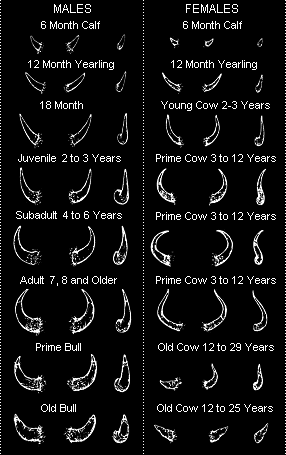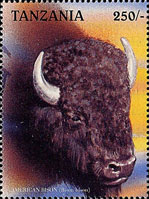| Description | Taxonomy | Distinctions | Age and horns | Wisent’s diet | Books | Articles | |
CHANGE OF THE FORM OF HORNS WITH AGE 
Calves: Young of the year of both sexes.
Yearlings: Animals of both sexes with spike-shaped horns (10-30 cm length). 
Cows: Horns are thinner than those of any male. Horns are curved toward the middle line of the skull or towards the back forming an S-shape in older cows. Front of the skull is narrower than that of adult bulls. Juvenile Bulls: Base of horns is wider than cows. Horns point upward or outwards, but are never curved to point towards each other. 
Sub-adult Bulls: Hair on head and shoulders is shorter than in adult bulls. Horns point straight up or towards the middle line of the skull. Base of horns is wider than in cows. Adult Bulls: Body size is much larger than cows. Hair on chest and head is fully developed, leaving no open space between the horns. Horns are curved towards the middle line of the skull. Older bulls: Older bulls can be identified by their worn horn tips. Source: http://www.enr.gov.nt.ca/_live/pages/wpPages/wood_bison.aspx | |
Hosted by uCoz
